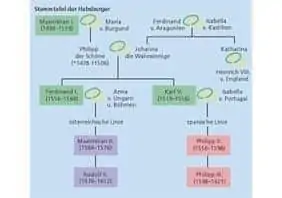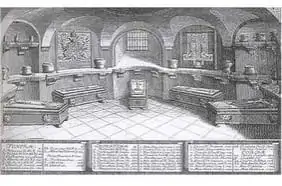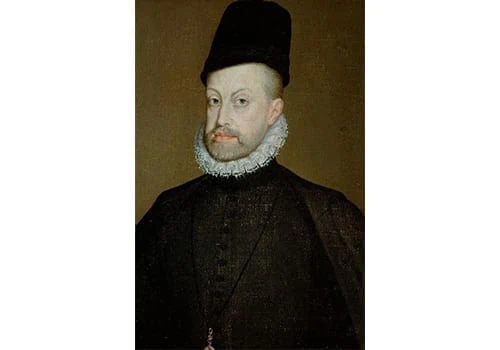“Bella gerant alii, tu felix Austria nube – Wars may others wage, you happy Austria, marry”. This famous saying characterizes the marriage policy of the Habsburgs. Which important connections enlarged the Habsburg Empire?
It began with Emperor Maximilian I (1459 – 1519), who was very successful in the Habsburg marriage policy. Through his marriage to Mary of Burgundy, the rich and only heiress, this territory came to the Habsburg Empire. Burgundy was considered a major European power in the 15th century. It was a love marriage that produced two children, Philip and Margarethe. The son, Philip, called the Fair, was married to Joan the Mad from Spain and so it came to the acquisition of Spain. Joan was the daughter of the Catholic kings Ferdinand II of Aragon and Isabella I, heiress of Castile and Leon. Philip’s sons, Charles V and Ferdinand I, became the later rulers and succeeded Maximilian I on the throne as Holy Roman Emperor. After Maximilian’s death, his son Philip the Fair was supposed to succeed him on the throne, but he died much too early and his wife Joan the Mad was unable to rule due to a mental illness. Their son, Charles V (1500-1558) became ruler of a world empire where the sun never set. From his maternal grandfather (Ferdinand II of Aragon) he had inherited Spain, the Kingdom of Naples with Sicily and Sardinia, as well as, the territories conquered in the New World. His paternal grandfather (Maximilian I) left him the Habsburg lands and the imperial crown of the Holy Roman Empire. Charles V felt more drawn to Spain and agreed a partition treaty with his brother Ferdinand in 1521. Ferdinand I received the Austrian hereditary lands including. Tirol, Karl all Spain incl. of the possessions in Italy, Burgundy, Luxembourg and the Netherlands, as well as the conquered territories of the New World. Bohemia and Hungary were married off, which was the result of a clever move by Maximilian. He arranged a double marriage in 1515 at the Vienna Princes’ Day with King Vladislav II, the then ruler of Hungary and Bohemia. His son and heir to the throne Ludwig was to marry Maria, a granddaughter of Maximilian, while Wladislaw’s daughter Anna was to marry one of Maximilian’s grandsons (Charles or Ferdinand). Ferdinand was finally the lucky one who was allowed to marry Anna. Her brother Louis died childless in the battle against the Turks and so Hungary and Bohemia fell to the Habsburgs.
Here you will find the top sights in Vienna and more topics about Maria Theresa or Gustav Klimt.



